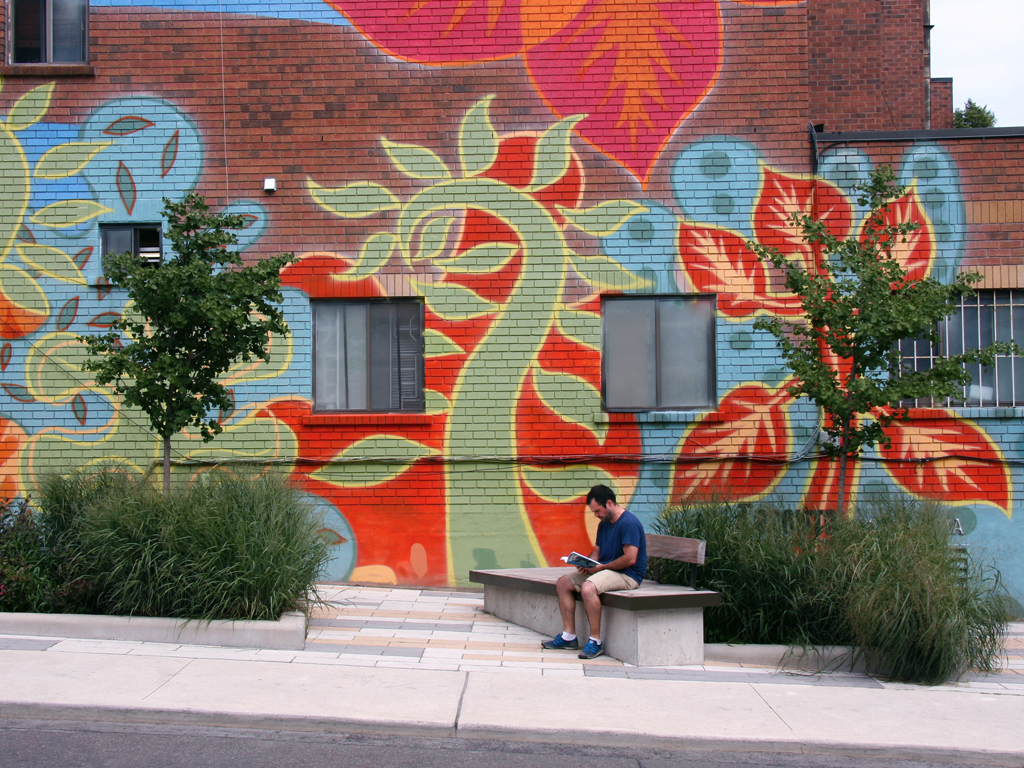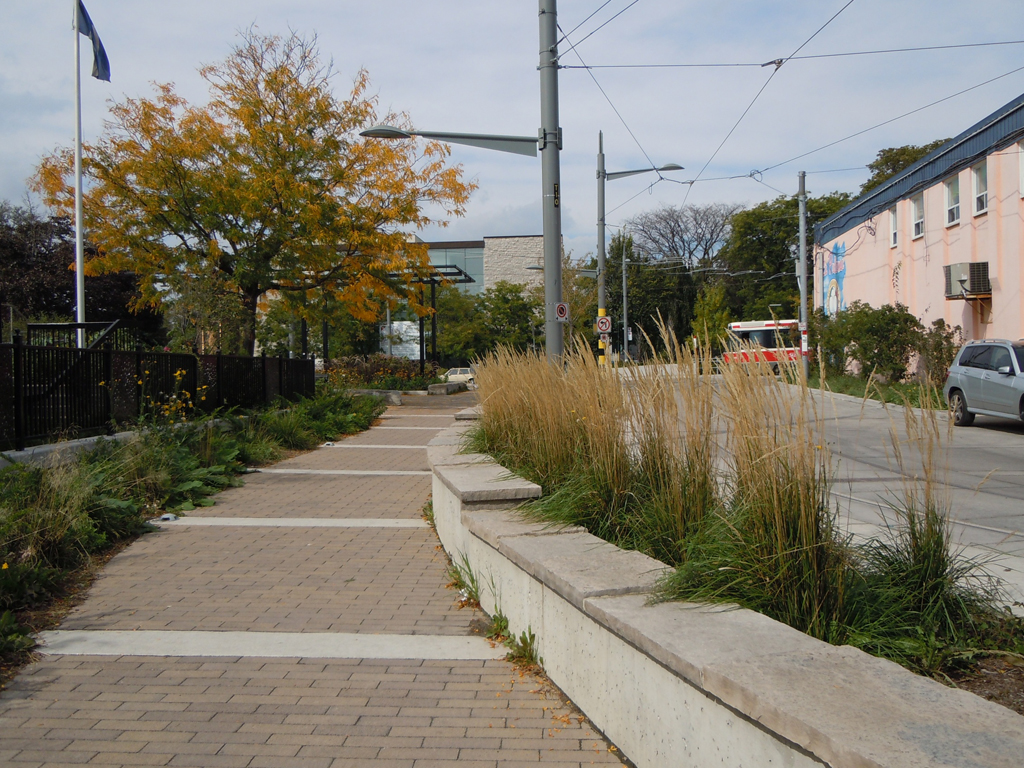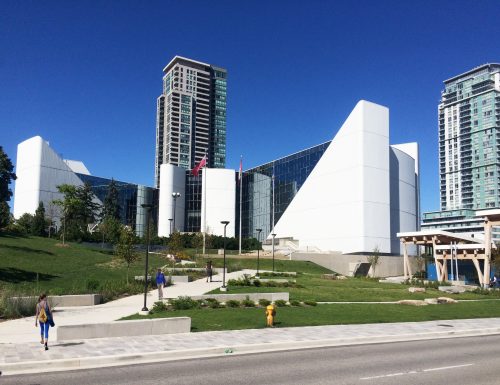
The Civic Improvement Program is a modest but high value-added capital program that significantly enhances the on-going capital programs of other departments as well as Business Improvement Areas’ initiatives and private sector city-building activities. Broadly speaking, Civic Improvement projects can be grouped into three general categories: Places, Routes, and Districts.

“Places” is a Project Theme defined by opportunities to create outdoor “rooms” or distinctive “locations” in the public realm that enhance the quality of the pedestrian environment. “Places” may include special areas, gateways, green intersections, natural system connections, and bridge, underpass and rail intersections.
An example of a “Place” that has been upgraded through creative design is 1335 to 1703 Dundas Street West with the Dundas Street West Parkettes:

“Routes” is a Project Theme that focuses on the opportunities for urban design improvements to the major elements of the City’s street system where vehicular and pedestrian volumes are greatest. “Routes” may include avenues, corridors, and expressways.
An example of a “Route” that has benefited from the Civic Improvement Program is along St. Clair Avenue West:

“Districts” is an integrated Project Theme comprised of interconnected and interrelated areas and neighbourhoods. Many Districts are areas being revitalized through major planning and development initiatives that often include streetscape enhancement. “Districts” may include Downtown, Central Waterfront Plans, Centres, Secondary Plan Areas, and Community Improvement Plan Areas.
An example of a “District” where the Civic Improvement Program has helped create more vibrant public spaces is the Scarborough Centre Civic Green.
The high success rate of the Civic Improvement Program is based on its seamless coordination with construction projects and Transportation Services’ road reconstruction program, ensuring projects are economical, efficient and cause minimal disruption to the public. Civic Improvement projects are carried out across the city and often offer an opportunity for the City to work with partners from the private sector and other levels of government. These projects lead to increased safety and environmental benefit, as well as more attractive, serviceable and inviting public areas for local residents, businesses and visitors to enjoy.

Civic Improvement projects apply to elements of the public realm such as the City’s system of streets, parks, open spaces, public buildings and facilities. Civic Improvement projects include streetscape improvements (special paving, widened sidewalks, tree planting and landscaping), the creation of special features (plazas, fountains, gardens and interpretative displays) and naturalization programs.
In 2004, a framework was created identifying Strategic Opportunities for Civic Improvements city-wide and presented in the 2004 Strategic Opportunities Report. These civic improvement opportunities can be seen in the Strategic Opportunities Map (PDF).
The council authority for the Civic Improvement Program can be found in the following council clause:
City of Toronto Planning and Transportation Committee Report 7, Clause 1, “Civic Improvement Program and its Relationship to the City Beautification Initiative”, adopted without amendment by City Council on October 26, 27 and 28, 2004.